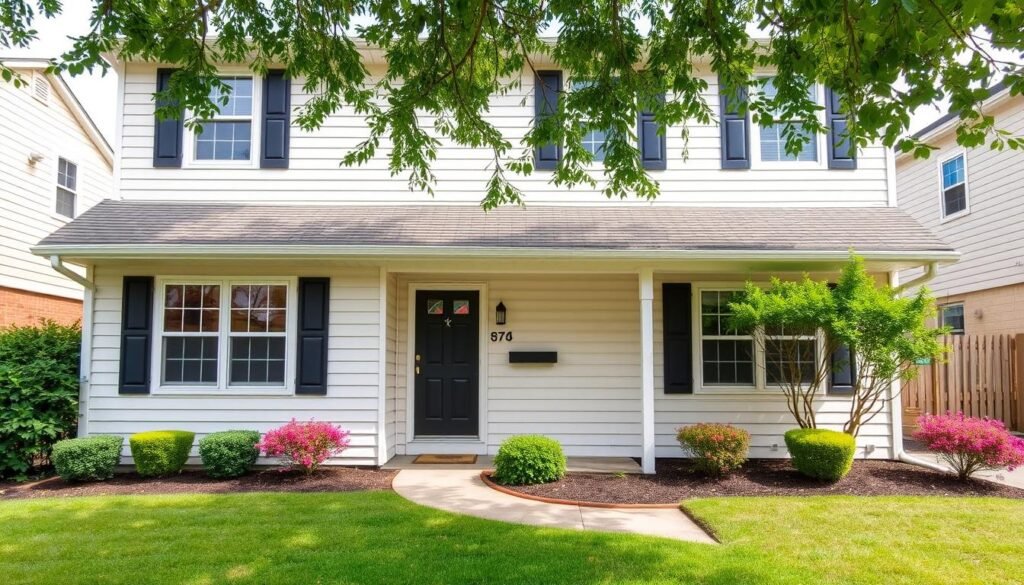Is your rental property up to scratch? The UK’s private rented sector (PRS) is changing. Awaab’s Law, first for social housing, now targets the PRS. It brings strict rules for decent homes.
This change will affect landlords and tenants. It’s a big deal for the rental market in the UK.
Awaab’s Law is named after a two-year-old boy who died from mould in social housing. It’s set to be a key part of housing rules. The government is introducing new rules in England for all tenancies.
Landlords and property managers need to get ready for big changes. They will have new responsibilities.
The new rules aim to fix housing disrepair and bad living conditions. 21% of PRS properties don’t meet the Decent Homes Standard. This shows the need for change.
Landlords could be fined up to £7,000 if they don’t follow the rules. This shows how serious these new laws are.
Understanding Awaab’s Law and its impact on the PRS is key. Changes include ending fixed-term tenancies and new rules for dealing with hazards. The rental market is about to change a lot.
Key Takeaways
- Awaab’s Law extends to the private rented sector, enforcing stricter housing standards
- New regulations expected to be enforced by summer 2025 for all tenancies
- Landlords face fines up to £7,000 for non-compliance with Decent Homes Standards
- 21% of PRS properties currently fail to meet the Government’s Decent Homes Standard
- Tenants gain more rights, including protection against discrimination and rent bidding wars
- New ombudsman service to be created for dispute resolution between landlords and tenants
Understanding Awaab’s Law and its Implications
Awaab’s Law is a big change in the UK’s rental property rules. It aims to improve tenant rights and make landlords do their job better. This includes fixing health problems like damp and mould.
Introduction to Awaab’s Law
This law is named after Awaab Ishak, a young boy who sadly died from mould in his home. It makes landlords act fast to fix health risks. This means tenants will live in safer homes.

Objectives of Awaab’s Law
The main aim of Awaab’s Law is to stop more tragedies like Awaab’s. It does this by:
- Making landlords respond quickly to health complaints
- Setting clear times for fixing problems
- Giving councils more power to check and fine landlords who don’t follow the rules
Importance for Tenants and Landlords
For tenants, Awaab’s Law means better protection and faster help with housing issues. Landlords now have to:
- Join a new ombudsman scheme for private rentals
- Keep up with stricter maintenance schedules
- Face fines of up to £7,000 if they break the rules
This law pushes for better property care. It helps both tenants and landlords by making homes safer and healthier.
Overview of the Private Rental Sector (PRS)
The Private Rental Sector (PRS) in the UK is very important for housing. But, there are big problems with property standards and tenant health.
Current State of the PRS in the UK
A government report shows 21% of PRS homes don’t meet the Decent Homes Standard. This shows we really need to work on keeping homes healthy and free from damp and mould.

Key Challenges Faced by PRS Tenants
PRS tenants often face bad living conditions. The Labour Party wants to help by making landlords follow the Decent Homes Standard. This standard has four main points:
- Statutory Minimum Standard for Housing
- Reasonable state of repair
- Reasonably modern facilities and services
- Reasonable degree of thermal comfort
Trends and Changes in the PRS
The PRS is changing a lot. Awaab’s Law makes landlords fix hazards quickly, with big fines if they don’t. Also, rental homes must have an EPC C rating by 2030. This shows a big push for better environmental health in the sector.
Decent Homes Standards: An Overview
The Decent Homes Standard was introduced in 2001 in the UK. It aims to better living conditions across the country. This standard is key in setting home safety rules and ensuring good housing for everyone.
Definition of Decent Homes Standards
A decent home has four main points:
- Free from serious health and safety hazards
- In a reasonable state of repair
- Equipped with reasonably modern facilities
- Providing adequate thermal comfort
Historical Context of Decent Homes
The Labour Government brought in the Decent Homes Standard in 2001. It aimed to improve social housing quality. Over time, it has grown to cover more of housing laws and safety rules.
Key Criteria for Decent Homes
The table below shows what makes a home decent:
| Criterion | Description |
|---|---|
| Statutory Minimum Standard | Meets basic legal requirements for housing |
| State of Repair | Major components in good working order |
| Modern Facilities | Up-to-date amenities and services |
| Thermal Comfort | Efficient heating and insulation |
Recently, 31% of landlords want to sell their homes. This is up from 22% four years ago. It shows how vital it is to keep decent homes standards. This ensures quality housing for tenants as the market changes.
The Intersection of Awaab’s Law and Decent Homes
Awaab’s Law is a big change for the UK’s housing. It aims to make homes better for tenants in the private sector.
How Awaab’s Law Enforces Decent Homes Standards
The law tells landlords how fast to fix serious problems. It says social housing must act on damp and mould in 14 days. This is important because 45% of tenants have seen damp, leaks, or mould recently.
Expected Outcomes for Tenants
Tenants should see better living conditions and quicker fixes. The law wants to make more homes decent. It also tackles the issue of over 500,000 homes with serious hazards.
Responsibilities of Landlords Under Awaab’s Law
Landlords have new duties under Awaab’s Law. They must fix serious problems quickly or face fines up to £7,000. The law also limits rent hikes to once a year and requires two months’ notice for any increase. These rules aim to protect tenants while considering landlord needs.
| Aspect | Before Awaab’s Law | After Awaab’s Law |
|---|---|---|
| Response Time to Hazards | No set timeframe | 14 days for damp and mould |
| Rent Increase Frequency | No limit | Once a year |
| Fines for Non-Compliance | Varied | Up to £7,000 |
Local authorities are key in making these changes happen. They now have more power to check if landlords follow Awaab’s Law.
The Role of Local Authorities in Enforcement
Local authorities are key in making sure homes are decent. They enforce laws and keep living standards high in rented homes. New rules have made their job bigger.
Local Authority Responsibilities
Local authorities now have more power to enforce laws. They can check homes, look into complaints, and fine those who don’t follow the rules. The Renters’ Rights Bill has helped them watch over rented homes better.
Partnership with Landlords
Local councils work with landlords to improve homes. They help and guide landlords to meet high standards. This way, everyone works together to make homes better.
Monitoring Compliance
Keeping an eye on rented homes is a big job. With millions of renters and landlords, it’s hard. A new database will help local councils track homes and make sure they meet standards.
| Aspect | Before | After New Legislation |
|---|---|---|
| Reporting Requirement | No mandatory reporting | Local authorities must report on enforcement activity |
| Civil Penalties | Limited scope | Expanded civil penalties for non-compliance |
| Investigatory Powers | Basic powers | Enhanced package of investigatory powers |
Challenges in Implementing Awaab’s Law
Introducing Awaab’s Law to the private sector is tough. It aims to better living conditions but faces many obstacles. Landlords and local authorities find it complex.
Resistance from Landlords
Many landlords worry about the new rules. With 88% of letting agents unsure about court readiness, there’s a lot of worry. Some are leaving the market, moving to short-term lets that aren’t regulated.
Administrative and Compliance Issues
There are big administrative hurdles. Now, getting a tenant out of a rental takes 29 weeks on average. In London, it can take up to 40 weeks. This makes it hard to enforce the rules and causes uncertainty for everyone.
Financial Implications for Local Councils
Local councils face big financial challenges. They might get more money to enforce the rules, but it might not be enough. They need to pay for inspections, legal actions, and court battles with landlords who don’t follow the rules.
| Challenge | Impact | Potential Solution |
|---|---|---|
| Landlord Resistance | Market exit, reduced housing stock | Education programmes, phased implementation |
| Administrative Delays | Prolonged disputes, increased costs | Streamlined processes, digital systems |
| Council Financial Strain | Limited enforcement capacity | Increased government funding, efficient resource allocation |
Despite the hurdles, better rental standards could be worth it. They could make the private rental sector fairer and safer for everyone.
The Impact of Awaab’s Law on Tenants’ Rights
Awaab’s Law is a big change for tenant rights in the UK. It tackles old problems in the private rented sector. It aims to make life better for over 11 million renters.
Increase in Tenant Protections
The law makes living conditions safer for tenants. Over 500,000 homes don’t meet safety standards. Awaab’s Law lets tenants fight these dangers.
Landlords could face fines up to £7,000 for ignoring serious problems. This makes rental homes safer for everyone.
Greater Accountability for Landlords
Landlords have to do more under Awaab’s Law. They must fix problems quickly and on time. The law also stops landlords from unfairly banning families or benefit recipients.
Support Services Available to Tenants
There are many ways for tenants to get help. Local teams and environmental health departments are there to assist. Tenant rights groups also offer advice on the new law.
Awaab’s Law is changing how landlords and tenants work together. It puts tenants first and makes rental homes safer and better.
Future Developments and Potential Revisions
The UK’s housing laws and home safety rules are about to change a lot. The government wants to make all rented homes decent by 2025. This means big changes for landlords and tenants.
Anticipated Changes to Awaab’s Law
Awaab’s Law will make it clear how to deal with home hazards. Landlords will have to fix damp and mould problems quickly. This is to make homes safer and better for everyone.
The Role of Tenant Advocacy Groups
Tenant groups are helping shape new laws. They’ve worked on the Renters’ Rights Bill. This bill will stop landlords kicking people out without reason and create a national landlord list. It’s all about making renting fairer and safer.
Predictions for the PRS Landscape
The Private Rented Sector (PRS) is getting a big update. The main changes are:
- Decent Homes Standard for private rentals
- Tighter Energy Performance Certificate (EPC) rules
- More power for councils to enforce rules
- A digital PRS database for better info
These changes are huge, the biggest in 30 years. They will affect 4.4 million tenants and 2.3 million landlords. Everyone will have to get used to new rules, changing the face of private renting in the UK.
Conclusion: The Path Forward for Awaab’s Law and PRS
The Private Rental Sector (PRS) in the UK is at a key moment. Awaab’s Law is set to change how landlords and tenants work together. It aims to make renting fairer and safer for everyone.
Reflection on the Current Scenario
Meeting decent homes standards is a big challenge right now. Labour wants to build 1.5 million new homes in their first term. This will put more pressure on the PRS.
Landlords now have to act fast. They must check for hazards in 14 days and start fixing them in 7 days.
Call to Action for Stakeholders
Everyone needs to work together to make Awaab’s Law work. Landlords must meet new energy standards by 2030. Tenants need to know their rights, like the 29 hazards listed by the Housing Health and Safety Rating System.
Final Thoughts on Decent Homes Standards
The future of Awaab’s Law and the PRS is clear. We must focus on decent homes standards. There will be challenges, like higher taxes for landlords. But the main goal is to give all renters safe, quality homes.
As we wait for the Renters’ Rights Bill to pass, the UK’s rental sector is on the verge of change. It will put tenant welfare and property standards first.




